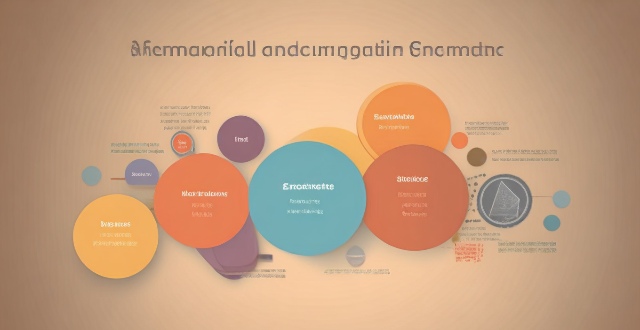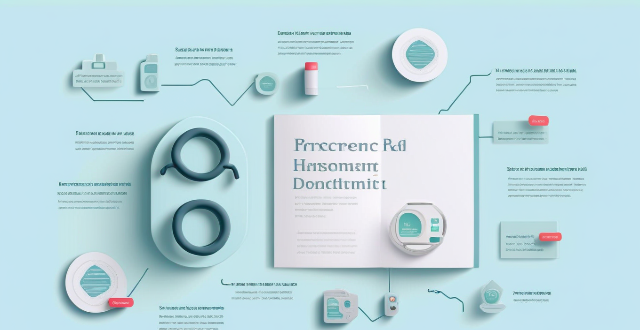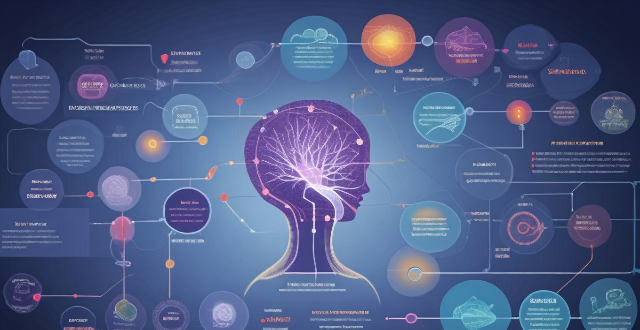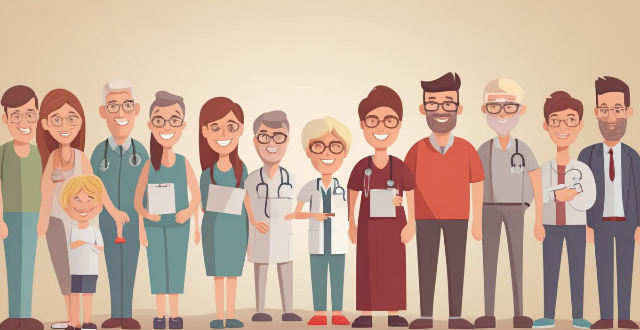Condition Severe

What is the difference between acute and chronic conditions in first aid ?
The article discusses the difference between acute and chronic conditions in first aid, highlighting key points to remember for each type. Acute conditions are sudden, severe, and short-term, often requiring immediate action and potentially lifesaving interventions. Examples include heart attack, stroke, severe allergic reactions, fractures or dislocations, poisoning, severe burns or scalds, and severe bleeding or shock. Key points to remember for acute conditions are to act quickly, call for help, and stabilize the patient while waiting for professional medical assistance. Chronic conditions, on the other hand, are long-term health problems that persist over time and often require ongoing management rather than urgent intervention. Examples include diabetes, asthma, high blood pressure, arthritis, COPD, migraines, and epilepsy. Key points to remember for chronic conditions are to know the patient's history, monitor symptoms, seek medical advice, and educate yourself about the specific condition. In summary, understanding the differences between acute and chronic conditions is essential when providing first aid to ensure appropriate care is given based on the nature of the condition.

How does having a pre-existing condition impact my ability to buy insurance ?
The text discusses the impact of pre-existing conditions on insurance purchase, including eligibility, cost, waiting periods, exclusions and limitations. It also provides tips for buying insurance with a pre-existing condition such as researching options, disclosing relevant information, considering government-sponsored plans, and working with an insurance broker.

What should I do if I encounter someone with a severe allergic reaction ?
In case of a severe allergic reaction, it is crucial to act quickly and follow these steps: stay calm, call for help, use an EpiPen if available, position the person comfortably, monitor vital signs while waiting for help, remain with them, keep them from eating or drinking, note symptoms, provide information to medical staff, and stay until stabilized. Preventative measures include knowing the person's allergies, having an action plan, and learning first aid. Remember, severe allergic reactions can be life-threatening, so quick action and professional medical help are essential.

Is there a link between endometriosis and infertility ?
Endometriosis is a condition where tissue that normally lines the uterus grows outside of it, leading to inflammation, scarring, and adhesions in the pelvis. This can make it difficult for sperm to reach the egg or for the egg to be fertilized. Additionally, endometriosis can cause hormonal imbalances that can affect ovulation and menstrual cycles. While the severity of endometriosis does not always correlate with the degree of infertility, it is one of the most common causes of female infertility. Other factors such as age, lifestyle choices, genetics, and other medical conditions can also contribute to infertility. If you are struggling with fertility issues, it is important to talk to your doctor about all of your options and to get a thorough evaluation to determine the underlying cause.

What are the symptoms of hypothermia and how can I treat it ?
The text discusses the symptoms and treatment of hypothermia, a condition that occurs when the body loses heat faster than it can produce. Symptoms include shivering, slurred speech, slow breathing, weak pulse, clumsiness, drowsiness, confusion, and loss of consciousness. Treatment involves moving the person to a warm location, removing wet clothing, warming them up gradually with blankets or hot water bottles, giving them warm fluids, and seeking medical attention immediately. The text emphasizes the importance of prevention by dressing appropriately for cold weather conditions, staying dry, and limiting time outdoors during extreme weather events.

What are the long-term consequences of untreated mental health conditions in women ?
The text discusses the severe and long-lasting consequences of untreated mental health conditions in women, which can affect their overall well-being, relationships, and quality of life. These consequences can be physical, emotional, and social, and they often compound over time. The most significant long-term effects include increased risk of chronic diseases, compromised immune system, sleep disorders, escalation of symptoms, self-medication, suicidal thoughts and behaviors, strained interpersonal relationships, workplace challenges, financial difficulties, reduced life satisfaction, limited participation in activities, and poor self-esteem. It is essential to recognize that these conditions do not improve over time without intervention and instead worsen, causing a ripple effect that touches every aspect of a woman's life. Early detection and treatment are crucial for managing mental health disorders effectively and preventing these long-term consequences. Seeking support from professionals such as therapists, psychiatrists, or counselors can provide the necessary tools and resources to address mental health concerns and improve overall well-being.

What are the symptoms of COVID-19 ?
COVID-19 is a respiratory illness caused by the SARS-CoV-2 virus. The symptoms of COVID-19 can vary from person to person, but some common symptoms include fever or chills, cough, shortness of breath or difficulty breathing, fatigue or tiredness, muscle or body aches, loss of taste or smell, sore throat, runny nose or congestion, nausea or vomiting, diarrhea, chest pain or pressure, headache, dizziness or lightheadedness, chills and sweats, body aches and pains, red eyes or conjunctivitis (pink eye), skin rash or discoloration (in severe cases), neurological symptoms such as confusion, loss of consciousness, seizures, or paralysis (in severe cases), respiratory distress or difficulty breathing (in severe cases), and death in severe cases (usually due to complications such as pneumonia, acute respiratory distress syndrome (ARDS), multi-organ failure, or cardiac arrest).

What advice would a psychologist give for someone with severe exam anxiety ?
Exam anxiety is a common issue that can impact performance. A psychologist offers advice on recognizing symptoms, identifying triggers, coping strategies (time management, study techniques, relaxation techniques, positive self-talk, seeking support), preparing for the exam day (sleep, healthy meal, arriving early), during the exam (reading instructions carefully, staying calm and confident, managing time wisely), and after the exam (reflecting on performance, taking care of yourself). By understanding exam anxiety and adopting effective strategies, individuals can overcome their fears and perform to the best of their abilities.

What are some effective strategies for managing chronic conditions as part of personal health care ?
Managing chronic conditions requires a combination of self-care, education, lifestyle changes, and support from others. Developing a self-care plan, educating yourself about your condition, making healthy lifestyle choices, and seeking support from family and friends are all effective strategies for managing chronic conditions. By taking an active role in managing your symptoms and communicating effectively with your healthcare team, you can improve your overall quality of life and reduce the impact of your condition on your daily activities.

Can you recharge a dead lead-acid battery ?
Recharging a dead lead-acid battery is possible, but it depends on the condition of the battery and how long it has been discharged. Here are some steps to follow when attempting to recharge a dead lead-acid battery: Check the battery's condition, determine the battery's voltage, choose the right charger, connect the charger to the battery, monitor the charging process, and test the battery after charging. In summary, recharging a dead lead-acid battery is possible as long as the battery is in good condition and the correct charging procedures are followed.

Is it safe to drive at night during a road trip ?
Driving at night during a road trip can be exhilarating but also risky due to reduced visibility and potential for drowsiness. To ensure a safe journey, consider safety precautions such as checking headlights and fog lights, taking breaks every two hours or 100 miles, being extra vigilant in areas with wildlife, maintaining vehicle condition, using technology wisely, being prepared for emergencies, checking weather conditions, obeying legal requirements and regulations, and getting adequate sleep before starting the trip. By following these guidelines, you can help ensure a safer journey under the stars.

Can wearable technology effectively monitor chronic health conditions ?
Wearable technology shows potential in monitoring chronic health conditions by providing real-time data on health metrics. However, accuracy, data overload, and privacy concerns are limitations to consider. It should be used in conjunction with other forms of healthcare monitoring for effective management of chronic conditions.

Are pre-existing medical conditions covered by travel insurance ?
Travel insurance coverage for pre-existing medical conditions varies by policy and provider. Factors influencing coverage include the type of policy, deductibles and limits, waiting periods, and disclosure of information. Some policies offer limited or comprehensive coverage for these conditions, while others exclude them altogether. It is crucial to research different policies and consult with an insurance professional to find the best coverage for your individual needs.

How can older adults with chronic conditions incorporate exercise into their daily routine ?
Incorporating exercise into the daily routine of older adults with chronic conditions is crucial for maintaining their overall health and well-being. Here are some tips on how they can achieve this: * Start slowly by gradually increasing the duration and intensity of low-impact exercises like walking or swimming. * Choose appropriate exercises that focus on strength training, flexibility, and range of motion to reduce the risk of injury. * Set realistic short-term and long-term goals to build momentum and confidence. * Make exercise a habit by scheduling specific times during the day and creating a routine. * Stay safe and comfortable by wearing appropriate gear, staying hydrated, and seeking professional advice when needed. * Track progress in a journal and celebrate milestones to stay motivated.

How can I customize my emergency kit for specific medical needs ?
Customizing an emergency kit for specific medical needs is crucial for individuals with health conditions. To tailor your kit, assess your medical needs, list down medications, and identify potential complications. Incorporate specialized equipment like diabetes management tools or heart condition medication. Include general first aid supplies, information cards, and instruction manuals. Don't forget communication tools and personal comfort items to alleviate stress during emergencies. Being prepared can significantly impact managing your health in disaster situations.

What are the potential risks associated with a high-fat diet ?
A high-fat diet, particularly one rich in saturated and trans fats, can pose several health risks. These include an increased risk of cardiovascular disease, obesity and weight gain, type 2 diabetes, liver disease, cancer, and digestive issues. It is essential to maintain a balanced diet that includes healthy fats while limiting the intake of saturated and trans fats found in processed foods and fried foods.

What are the harmful effects of chemicals on human health ?
Chemicals can have harmful effects on human health, affecting various systems in the body. Short-term exposure to chemicals can cause irritation of the respiratory system, increased heart rate and blood pressure, headaches, dizziness, and confusion. Long-term exposure to chemicals can lead to chronic bronchitis, emphysema, lung cancer, coronary artery disease, heart failure, stroke, neurological disorders, memory loss, and mood disorders. It is essential to be aware of the potential harmful effects of chemicals and take necessary precautions to protect our health.

In what situations should I call emergency services immediately ?
This text explains the importance of calling emergency services immediately in life-threatening situations. It outlines various scenarios where immediate action is crucial, including major accidents and injuries, serious medical emergencies, sudden changes in health status, environmental emergencies, and mental health crises. The text emphasizes the significance of prompt action to save lives and prevent further harm, advising readers to stay calm and provide detailed information to the dispatcher.

What is the difference between arc flash and arc blast ?
Arc flash and arc blast are both hazardous electrical phenomena that can occur in industrial environments. The primary difference between the two lies in the amount of energy released during the event, with arc blast being more severe due to its explosive nature. Proper safety measures and equipment maintenance are essential for preventing both types of events and minimizing their impact on personnel and equipment.

What are the treatment options for COVID-19 ?
The text is about the different treatment options for COVID-19. The treatments are divided into symptomatic treatment, antiviral treatment, monoclonal antibodies, convalescent plasma therapy, supportive care, and other potential therapies. Symptomatic treatment includes rest and hydration, pain relievers, and antibiotics if necessary. Antiviral medications such as Remdesivir and Favipiravir may be used in severe cases to suppress the virus. Monoclonal antibodies like Bamlanivimab and Casirivimab and Imdevimab can be used to treat certain patients at high risk of developing severe illness. Convalescent plasma therapy involves collecting blood plasma from recovered patients and transfusing it into active patients. Supportive care includes oxygen therapy, mechanical ventilation, and corticosteroids. Other potential therapies being investigated include interferon, nitazoxanide, and experimental drugs currently in clinical trials.

What is the correct procedure for treating someone who has fainted ?
The text provides a detailed procedure for treating someone who has fainted, emphasizing the importance of ensuring safety, checking responsiveness, calling for help, proper positioning, loosening clothing, checking breathing and pulse, moving to recovery position, and seeking medical attention. It stresses that these steps are a general guideline and professional medical assistance should always be prioritized, especially if the person does not regain consciousness quickly or shows signs of severe distress.

What happens if I get injured while playing sports and don't have insurance ?
Injuries are a common occurrence in sports, and they can range from minor to severe. When you get injured while playing sports, the first thing that comes to mind is seeking medical attention. However, what happens if you don't have insurance? This article will explore the consequences of not having insurance when you get injured while playing sports. If you get injured while playing sports and don't have insurance, you will be responsible for paying all the medical expenses out of pocket. This can include doctor visits, hospital stays, surgery, physical therapy, and medication. Depending on the severity of the injury, these expenses can add up quickly and become a financial burden. Without insurance, you may have limited access to healthcare providers. Some doctors and hospitals may refuse to treat patients without insurance or may require upfront payment for services rendered. This can delay treatment and potentially worsen your condition. If your injury occurs during a team sport or an organized event, there may be legal implications if you don't have insurance. The organizers or other players may hold you liable for any damages or injuries that occur during the game. This can result in lawsuits and legal fees. Not having insurance can also have long-term effects on your health and well-being. If you cannot afford proper medical care or physical therapy, your injury may not heal properly, leading to chronic pain or disability. This can impact your ability to work or participate in activities you enjoy. The best way to avoid these consequences is to get insurance coverage. There are various types of insurance policies available, including health insurance, accident insurance, and sports-specific insurance. Research and compare different policies to find one that meets your needs and budget. Another way to reduce the risk of injury is to participate in low-risk sports or activities. Choose sports that are less likely to cause severe injuries, such as swimming or cycling, instead of contact sports like football or rugby. Wearing protective gear can also help prevent injuries while playing sports. Make sure to wear appropriate gear such as helmets, pads, and mouthguards when participating in high-risk activities. If you do get injured while playing sports, seek medical attention promptly even if you don't have insurance. Some healthcare providers offer payment plans or sliding scale fees based on income, which can help alleviate some of the financial burden associated with receiving medical care. In conclusion, getting injured while playing sports without insurance can have serious consequences, including high medical expenses, limited access to healthcare, legal liability, and long-term effects on your health and well-being. To avoid these consequences, it is important to get insurance coverage, participate in low-risk sports, use protective gear, and seek medical attention promptly if needed.

How do I know if my injury requires a visit to a sports rehabilitation center ?
The article provides a comprehensive guide on how to determine if a sports injury requires a visit to a sports rehabilitation center. Factors such as pain level, swelling and bruising, limited range of motion, and symptoms of instability or weakness are discussed. The article also lists specific symptoms that warrant a visit to a sports rehabilitation center and highlights the benefits of seeking professional help for sports-related injuries. Overall, the article emphasizes the importance of proper assessment and treatment of sports injuries to ensure a successful recovery.

What are the potential health risks associated with global warming ?
Global warming, caused by human activities, poses various health risks including heat-related illnesses like heatstroke and dehydration, spread of diseases such as malaria and Lyme disease, respiratory problems including asthma and allergies, and mental health issues like anxiety, depression, and PTSD. It is crucial to take measures to mitigate these effects and safeguard public health.

What are the effects of domestic violence on women's mental health ?
Domestic violence has severe and long-lasting impacts on women's mental health, including depression, anxiety, post-traumatic stress disorder (PTSD), and substance abuse. It is crucial for healthcare providers to screen for signs of domestic violence and provide appropriate support services for affected women.

What are the signs of colic in infants and how can it be managed ?
Colic is a common condition in infants, characterized by intense crying episodes that are not related to hunger or a wet diaper. Signs of colic include inconsolable crying, predictable timing, red-faced appearance, bent posture, excessive gas, and sensitivity to stimuli. Managing colic involves soothing techniques such as swaddling, white noise, gentle movement, and stomach massage. Feeding adjustments like burping frequently, changing feeding positions, using anti-colic bottles, and monitoring maternal diet can also help. Environmental factors such as reducing stimulation, consistent routine, and calm presence play a role in managing colic. Medical interventions may include professional guidance, medications, and alternative therapies. It's important to consult with a healthcare provider to rule out any other medical conditions and effectively manage colic.